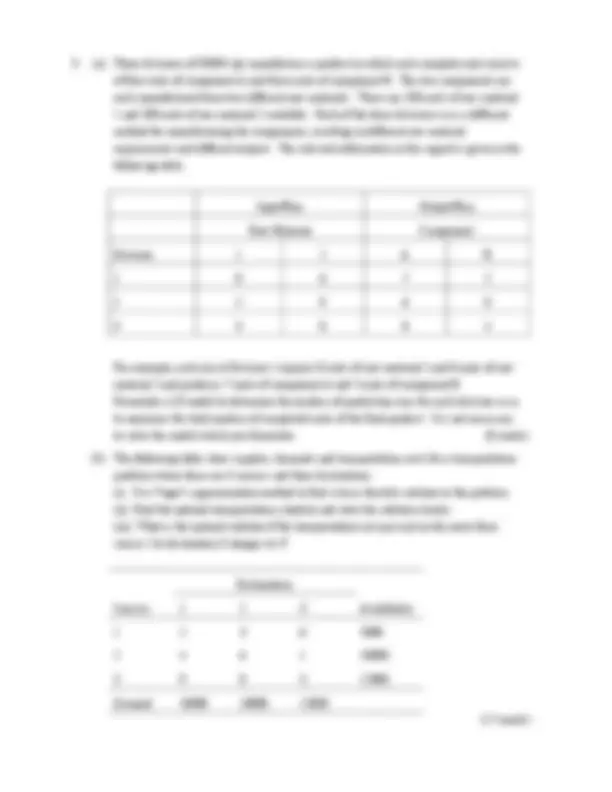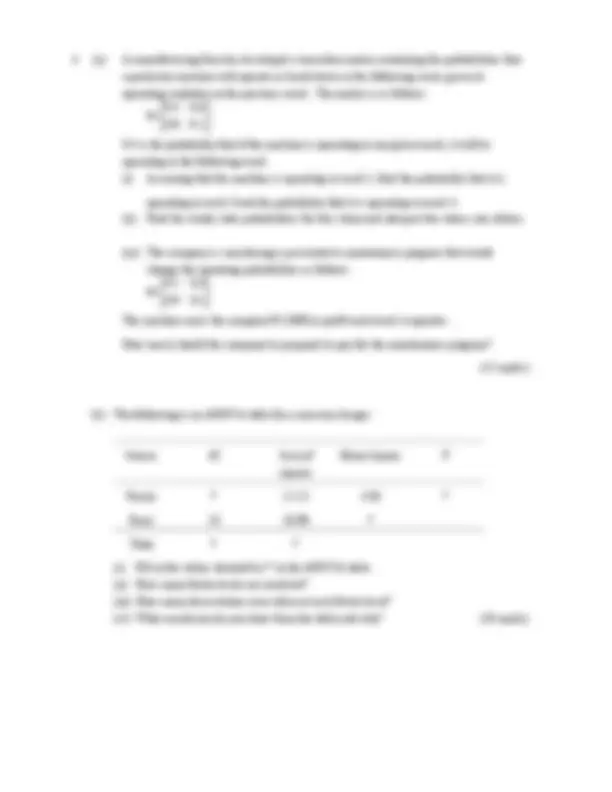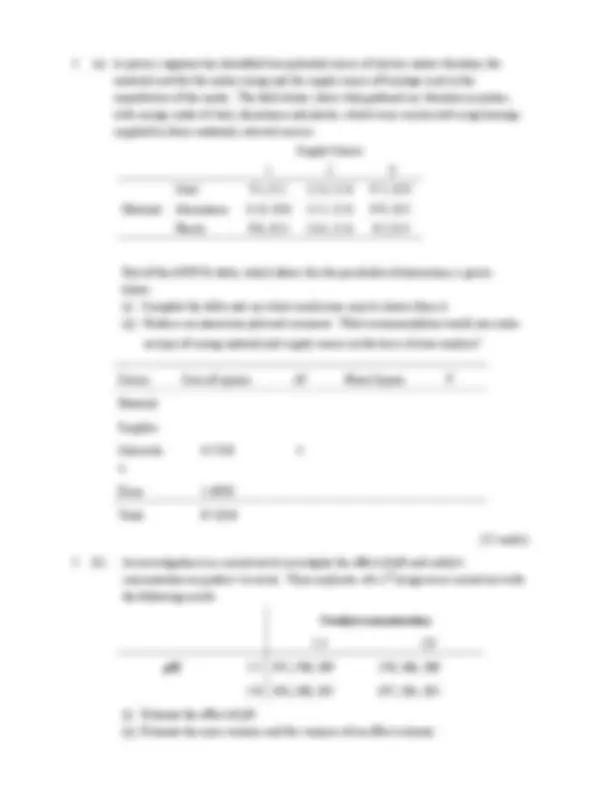





Study with the several resources on Docsity

Earn points by helping other students or get them with a premium plan


Prepare for your exams
Study with the several resources on Docsity

Earn points to download
Earn points by helping other students or get them with a premium plan
Community
Ask the community for help and clear up your study doubts
Discover the best universities in your country according to Docsity users
Free resources
Download our free guides on studying techniques, anxiety management strategies, and thesis advice from Docsity tutors
Main points of this past exam are: Basic Feasible Solution, Non-Basic Feasible, Solution, Linear, Basic Feasible, Decision Variables, Constraints, Nonbasic, Variables, Simplex Table
Typology: Exams
1 / 7

This page cannot be seen from the preview
Don't miss anything!




Instructions: Answer FOUR questions. All questions carry equal marks. Statistical tables are available.
Examiners: Mr. D. O’Hare Mr. P Clarke Prof M. Gilchrist
for this problem? (iii) What is the difference between a slack variable and an artificial variable? (6 marks)
(b) Three products A, B and C each demand some of resources R 1 and R 2. The linear programming problem set up in order to maximise profit is as follows:
subject to 6 2 4 200 ..........
maximise 6 4 2
1 2 3
1 2 3 2
1 2 3 1
1 2 3
x x x
x x x R
x x x R
z x x x
x 1 (^) , x 2 , x 3 represent the number of units of A, B, C, respectively, to be produced. Part of the optimal simplex table is as follows:
Basis z x 1^ x 2^ x^3^ S 1 S 2 Solution 1/4 -1/ -1/4 3/
1.(b) contd
(i) Complete the optimal table above and state the optimal solution. Is this optimal solution unique? If not, find an alternative optimal solution. (ii) For each of the decision variables, find the range of values for the objective function coefficient for which the current basis remains optimal. (iii) What is the shadow price for resource R 1? What does this value mean? (iv) A fourth product, D, is to be considered. It requires 2 units of R 1 and 2 units of R 2 and offers a contribution of 9 per unit to the value of the objective function. Is this product worth producing? If it is, find the new optimal solution. (19 marks)
1 2 3
1 2 3
1 2 3
≥
x x x
x x x
x x x
(8 marks) (b) Formulate the dual of the problem in part (a). Deduce the solution to the dual from the primal optimal table and verify this solution by solving the dual problem graphically. (7 marks)
(c) Use the two-phase method to solve the following problem. Maximise z = x 1 + 5 x 2 + 3 x 3 subject to
1 2 3
1 2
1 2 3
≥
x x x
x x
x x x
(10 marks)
0.4 is the probability that if the machine is operating in any given week, it will be operating in the following week. (i) Assuming that the machine is operating in week 1, find the probability that it is operating in week 3 and the probability that it is operating in week 4. (ii) Find the steady state probabilities for this chain and interpret the values you obtain.
(iii) The company is considering a preventative maintenance program that would change the operating probabilities as follows: P= (^)
The machine earns the company €15,000 in profit each week it operates. How much should the company be prepared to pay for the maintenance program? (15 marks)
(b) The following is an ANOVA table for a one-way design:
Source df Sum of squares
Mean Square F
Factor * 12.12 4.04 * Error 23 18.90 * Total * * (i) Fill in the values denoted by * in the ANOVA table. (ii) How many factor levels are involved? (iii) How many observations were taken at each factor level? (iv) What conclusion do you draw from the table and why? (10 marks)
Part of the ANOVA table, which allows for the possibility of interaction, is given below. (i) Complete the table and say what conclusions may be drawn from it. (ii) Produce an interaction plot and comment. What recommendation would you make on type of casing material and supply source on the basis of your analysis?
Source Sum of squares df Mean Square F Material Supplier Interactio n
Error 1. Total 37. (12 marks)
2 V E ( (^) i ) (^) n .2^ ek 2